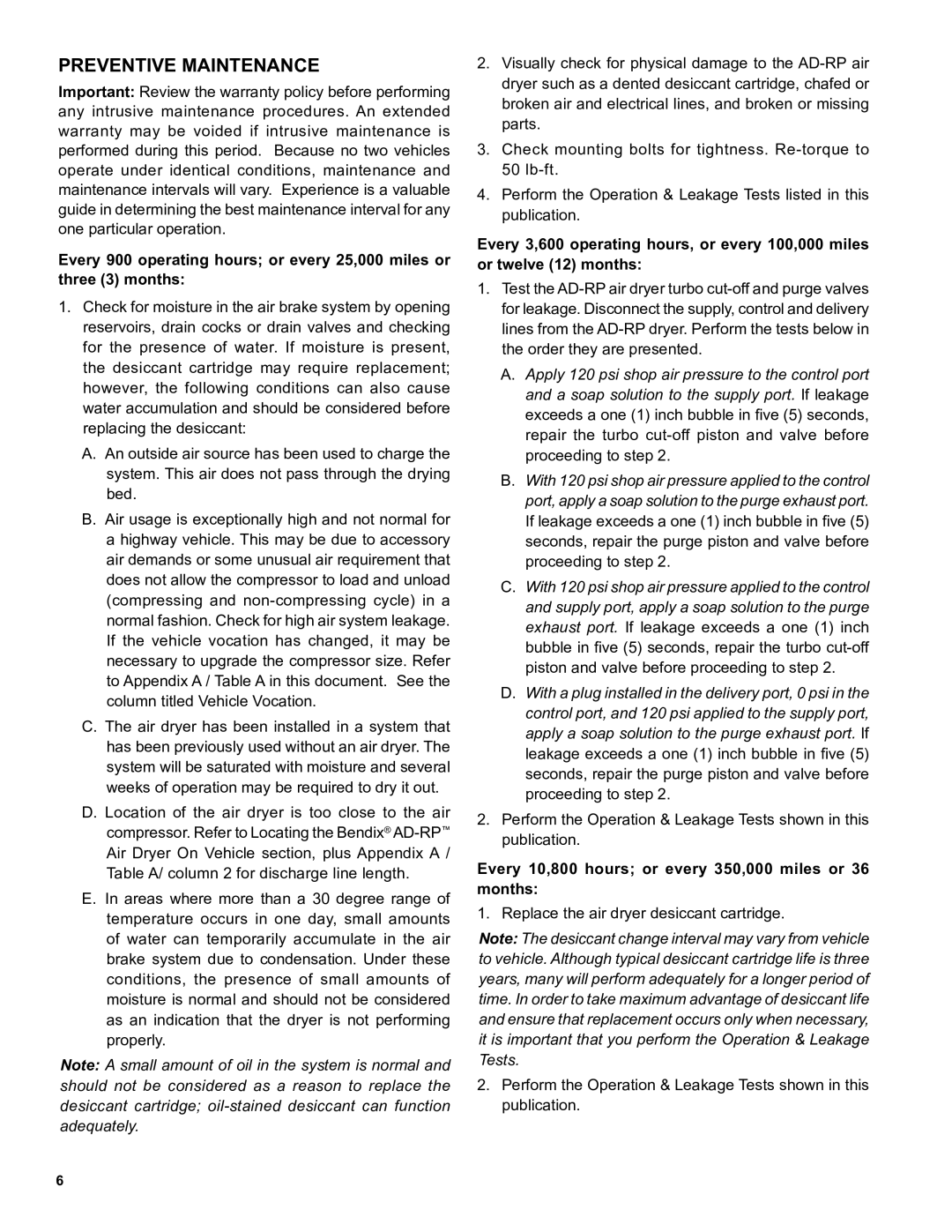SD-08-2415A specifications
The BENDIX SD-08-2415A is a state-of-the-art electronic control module designed to enhance the performance and safety of commercial vehicle brake systems. This innovative device is part of BENDIX's commitment to providing advanced braking technologies that meet the demands of modern transportation.One of the main features of the SD-08-2415A is its integrated functionality, which combines multiple braking systems into a single module. This includes Anti-Lock Braking Systems (ABS), Traction Control Systems (TCS), and Electronic Stability Control (ESC). By integrating these systems, the SD-08-2415A provides improved vehicle control and ensures optimal braking performance in various driving conditions.
The technology behind the BENDIX SD-08-2415A incorporates sophisticated algorithms that help to monitor wheel speed, generating real-time data to prevent wheel lock-up during hard braking. This not only enhances safety but also increases the lifespan of brake components by minimizing wear and tear. The module features advanced diagnostics capabilities, which allows for quick troubleshooting and maintenance, ensuring that operators can keep their vehicles in peak operating condition.
In addition to its core functionalities, the SD-08-2415A features an open architecture design, allowing for seamless integration with existing vehicle systems. This design provides flexibility for manufacturers and fleet operators to customize their braking systems according to specific requirements and regulatory standards.
Another key characteristic of the SD-08-2415A is its rugged construction, which is designed to withstand harsh operational environments. The module is resistant to vibrations, moisture, and temperature fluctuations, making it reliable for use in heavy-duty applications. This durability ensures that the unit maintains consistent performance over time, even in challenging conditions.
Furthermore, the BENDIX SD-08-2415A is equipped with advanced communication protocols, enabling it to exchange data with other vehicle systems. This capability enhances overall vehicle performance and allows for real-time monitoring of braking efficiency.
In conclusion, the BENDIX SD-08-2415A stands out as a leading solution in the commercial vehicle braking industry, offering a unique combination of integrated systems, advanced technology, and robust durability. Its ability to improve safety, extend component life, and adapt to various vehicle configurations makes it an essential component for modern fleets. As the industry continues to evolve, the SD-08-2415A represents the future of vehicle braking technology, prioritizing both performance and safety.
